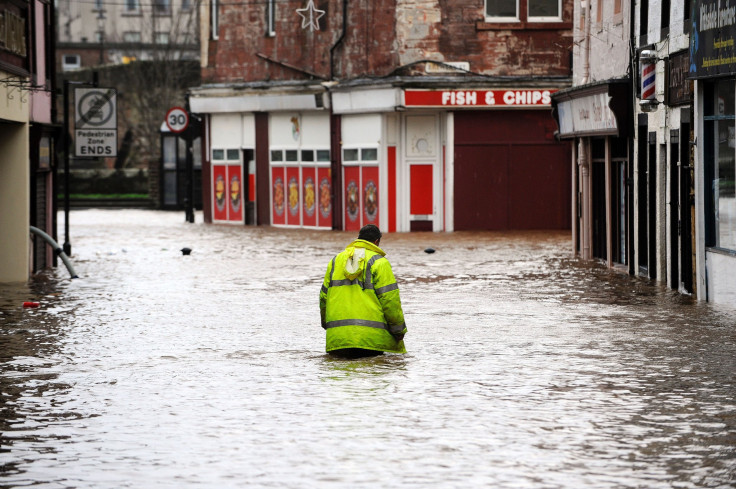Warmer US Winter Weather, El Niño, Polar Vortex Hurting Snow Sports, Retail Amid Unusual Global Patterns

You can sing the song all you want, but most folks accustomed to snow in December may have to wait awhile before actually walking in a winter wonderland. Months of record-high temperatures culminated this week in a series of unusual weather events: tornadoes in Texas, record-breaking flooding in Missouri, a Christmas in New York City as warm as the Fourth of July and torrential rains that forced evacuations in Europe and South America.
Meteorologists linked the weird weather patterns to a strong El Niño and polar vortex, predicting that more normal, seasonal conditions would arrive in January. But ski lodges as well as the retail and energy companies in some areas were already noticing a resulting lag in business and were banking on the coming cold.
"[The weather has] been so extreme over such a large area," said Judah Cohen, director of seasonal forecasting at Atmospheric and Environmental Research, a consulting firm in Lexington, Massachusetts. Cohen noted that no single factor could be blamed for the strange season before giving a verbal shrug: "I don't think there's a simple answer."
The past five years have been the hottest in history, and 2015 was no exception, complete with the development of El Niño, a warming of the Pacific Ocean that occurs periodically. Particularly powerful this year, El Niño began to bring higher temperatures and rain to the tropics and western coasts of North and South America -- contributing to the flooding. Cohen said the polar vortex, a big pocket of freezing air around Earth's poles, was also abnormally strong. By late December it has usually broken down, bringing chilly conditions to the lower latitudes, but it hasn't yet — hence the hot holidays.
"When you don't have that cold air coming down, and you have warm water in the oceans, you're going to get the warming we had," said Dan Kottlowski, a senior meteorologist at AccuWeather.com. "To see what's happening right now is certainly impressive, but it's not unprecedented."
In the middle of all of this, Kottlowski said, a jet stream also split the country, giving cold winds from the west a chance to mix with humid air from the east. The contrasting conditions likely helped fuel the storms that caused the tornadoes. "Everything is kind of coming together climatically," Kottlowski added.
Cohen said he thinks the polar vortex will weaken over the next few weeks, allowing the cold air to move southward and resulting in more typical winter conditions.
That's exactly what people involved in the winter sports industry — which includes 900,000 jobs and more than $60 billion in revenue, according to ProtectOurWinters.org — are hoping. Among them is Jeff Zellner, who works in public relations at the Bear Creek Mountain Resort in Lehigh Valley, Pennsylvania. The resort makes its own snow for skiing, but Zellner said the weather has stunted normal production.
The resort's workers were prepared for when the temperatures drop, though. "All we need is a small window of time when it's actually cold," Zellner said.
#Missouri facing record river flooding, evacuations are in place: https://t.co/MttEkvDqgP https://t.co/uRcijizDBX
— CNN Newsroom (@CNNnewsroom) December 29, 2015
Michael Berry, president of the National Ski Areas Association, a trade group in Denver, also remained optimistic. The skiing season is typically divided into thirds, so the heat has hurt only the first third, and only in the East, he said.
"We can recover," Berry insisted, citing customers' pent-up demand. "The people who are skiers and snowboarders are passionate about the sport. ... They'll come out in significant numbers."
As Climate Change Imperils Winter, the Ski Industry needs to rethink how to do business. https://t.co/XUdh5iSHMV pic.twitter.com/vTjBoGV9RE
— Melanie Rottmann (@MelanieRottmann) December 29, 2015
However, the retail sector could have trouble bouncing back. Data from Planalytics, which provides global business weather intelligence from its headquarters in Berwyn, Pennsylvania, shows that apparel specialty stores have taken the greatest hit from the warm December. The loss in sales between Nov. 1 and Dec. 19 of last year and this one was about $421 million.
David Frieberg, Planalytics' vice president of marketing, wrote in an email that customers bought other items, but "when you're wearing shorts and a T-shirt as you walk across the parking lot and into the mall, a new coat is not top of mind." National demand for boots, hats, gloves and scarves were all down about 4 percent from 2014.
Frieberg noted there may be a silver lining: Because people haven't been trapped indoors by snow, they've been eating out at restaurants more.
.@EIAgov Consumers will save 13% on heating bills this winter due to abundant natural gas. https://t.co/Lw5k13Em2t pic.twitter.com/4IQ50feA5m
— Range Resources (@Range_Resources) December 10, 2015
Another benefit for consumers came in the form of prices for heat. Households that rely on natural gas can expect a 10 percent decrease in expenditures this winter, the U.S. Energy Information Administration said earlier this month. Residents who use heating oil will spend about 25 percent — or $459 — less this year, and those who use propane will spend about 21 percent — or $320 — less.
The shifting forecast led natural gas futures to rise about 60 cents since hitting a 16-year-low Dec. 17, International Business Times previously reported. But that progress also depends on the weather: If it gets cold and stays that way, prices will rise. What happens next "lies in whether or not the El Niño is over, or even past its peak," Tradition Energy analyst Bob Shiring wrote in a Tuesday blog post. "And I don't have that answer."
© Copyright IBTimes 2024. All rights reserved.












